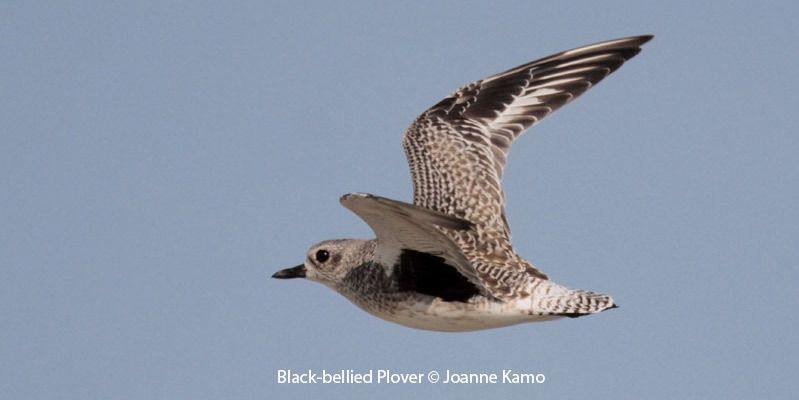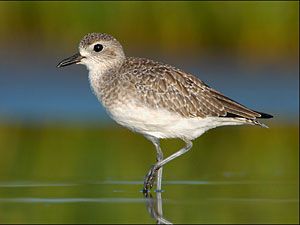
© Alan Murphy
Black-bellied Plover
Pluvialis squatarola
Family: (Charadriidae) Plovers and Lapwings
Preferred Habitat: Salt marshes and coastal beaches.
Seasonal Occurrence: Abundant August through April. Less common in summer.
Profile by Azure Bevington: The Black-bellied Plover is the largest plover in North America. It breeds in the Arctic tundra and winters along coastal mudflats and beaches in the United States, Central America, and the Caribbean.
Like other plovers, they have large round heads and prominent dark eyes. They can be distinguished at a distance by their large size (11.5 inches in length), long legs, and stout bill. In non-breeding plumage, these stocky shorebirds are quite plain with a mottled tan and gray back, a streaked breast, and a white belly. Their plumage changes drastically during the breeding season, when they exhibit their namesake solid black face, breast, and belly, along with stark white stripes on either side of their pale head. Females are similar to males but tend to be less vividly colored. All plumages exhibit a black armpit and whitish tail, which distinguish them from the similar-looking, but slightly smaller American and Pacific Golden Plovers.
They can be seen roosting in groups or feeding singly, pecking at the ground and then traveling a few steps before pecking again. When wintering along the coast, Black-bellied Plovers eat mainly molluscs, crustaceans, and marine worms that they pull from shallow mudflats at low tide. During the summer breeding season in the Arctic tundra, they eat mainly insects and some plant material.
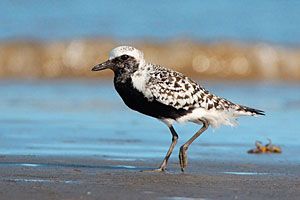
© Joanne Kamo
Profile by Rachel Myers: The Black-bellied Plover is species of plover that spends its winter along coasts across the United States, Central America, and the Caribbean. On the upper Texas Coast, Black-bellied Plovers are abundant from August through April and less common in the summer. This bird is rather large compared to other plover species and is in fact, the largest plover in North America.
Like other plovers, Black-bellied Plovers have round heads, dark eyes, and short, thick bills. Breeding males have checkered upper wings, a black face, belly, and “armpits”, and a white crown, nape and undertail. Breeding females are similar but with less contrast. Nonbreeding adults have a mottled, brown back and face, with a lighter belly. The black coloration under the wings is present year-round and is the best way to differentiate this species from other larger plovers.
Black-bellied Plovers breed in Arctic-tundra across both North America and Eurasia. Wintering Black-bellied Plovers prefer to use tidal creeks, salt marshes, and shorelines, where they feed on mudflats and beaches. They will often use nearby agricultural fields as well, especially during migration. Black-bellied Plovers eat invertebrate prey, mostly insects, worms, and crustaceans. Their large eyes help them spot prey, even at night, when foraging during lower tide cycles.
Black-bellied Plovers are commonly found on the upper Texas coast throughout the year and can be particularly abundant during the winter and spring. They are regularly seen at our Bolivar Flats Shorebird Sanctuary, often in large numbers. Come see how many you can spot and see them in action plucking prey out of the sand!
-
Cornell Lab of Ornithology
-
Field Guide
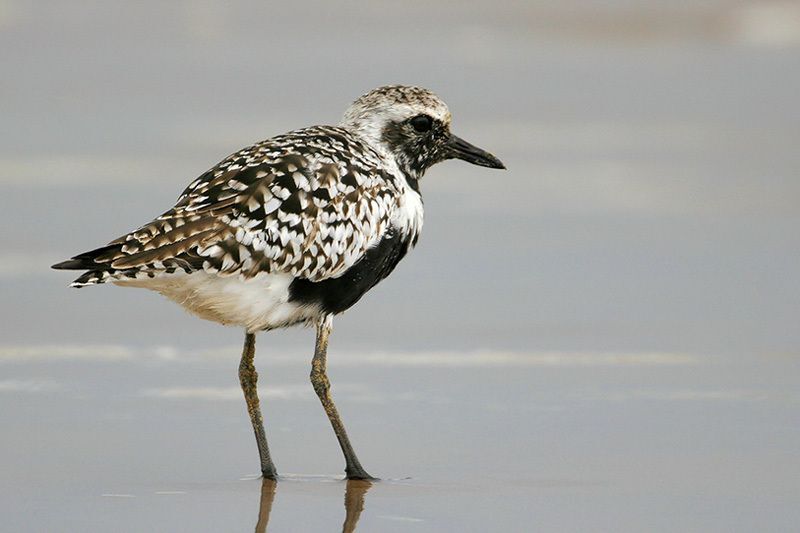
© Greg Lavaty, www.texastargetbirds.com
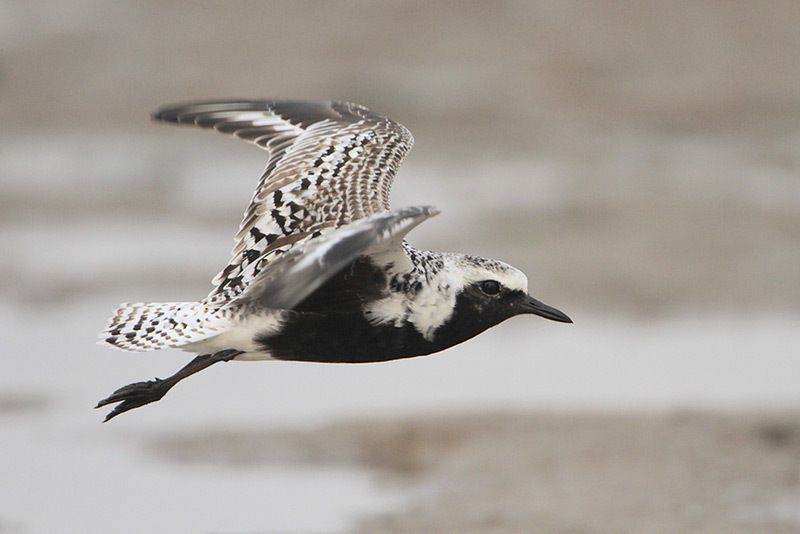
© Greg Lavaty, www.texastargetbirds.com
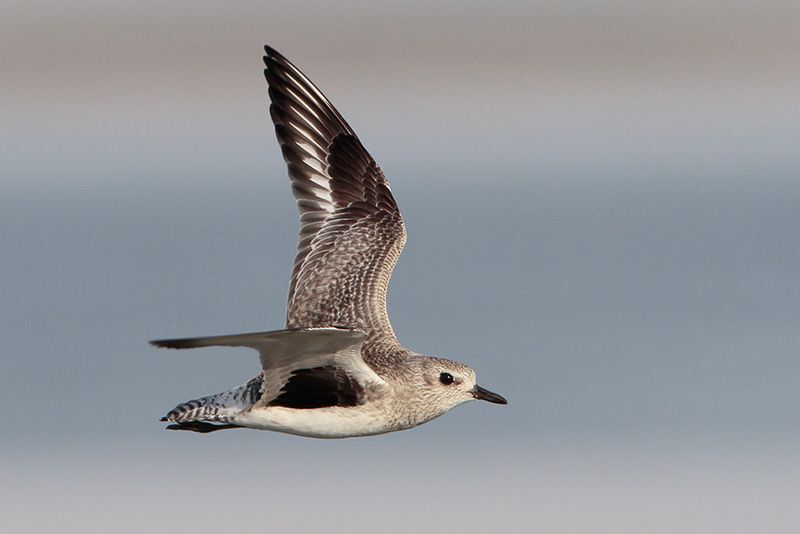
© Greg Lavaty, www.texastargetbirds.com
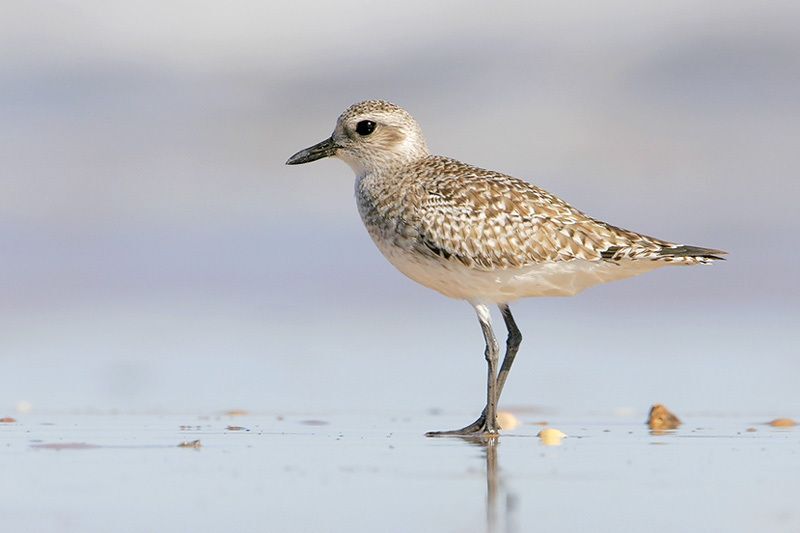
© Greg Lavaty, www.texastargetbirds.com

